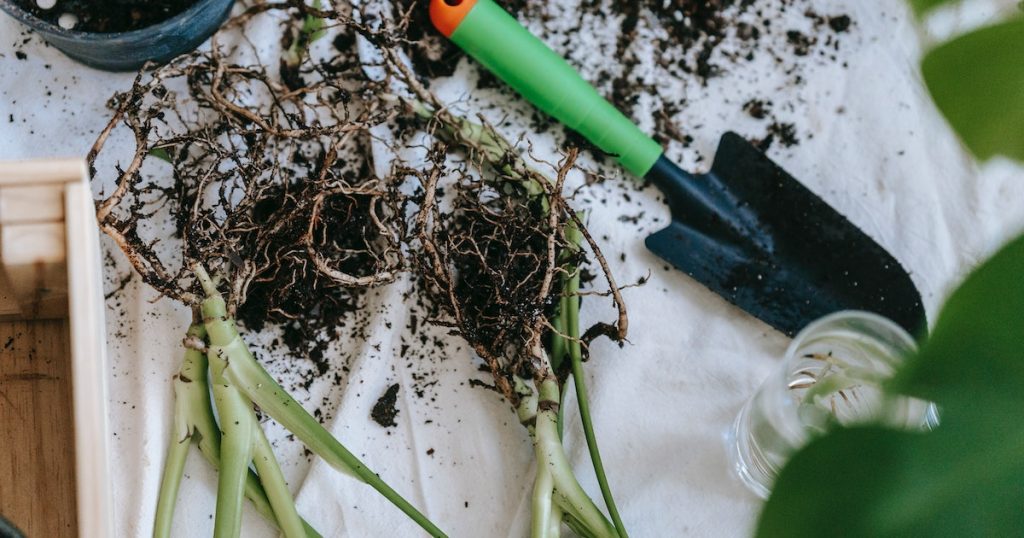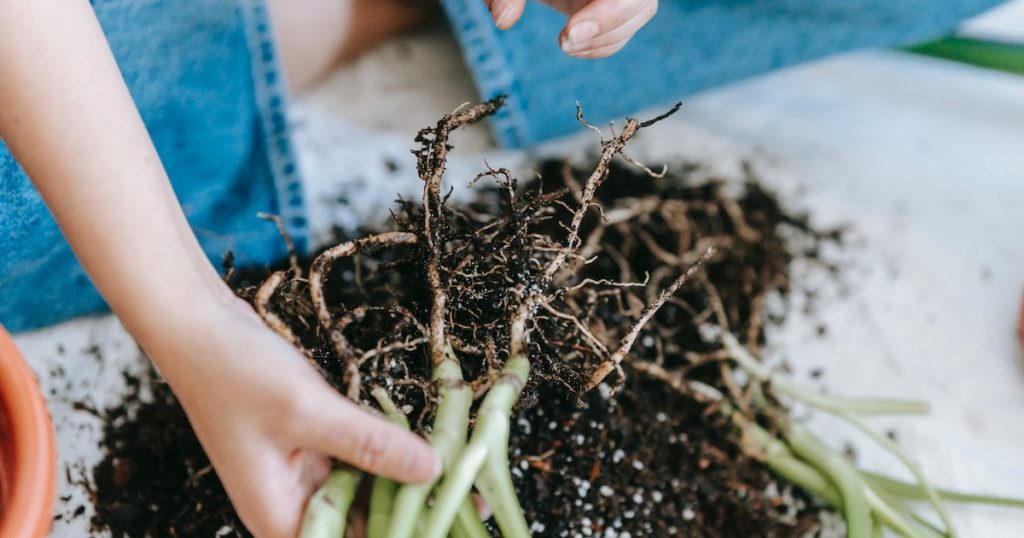Gardening can be a tricky hobby to take up. When to water the plants, how much, and how often? These are all questions that go through our heads. After so much effort, it is devastating when the results are disappointing, especially when roots rot. Why does that happen? Can the soil from these rotten-rooted plants be reused?
Yes, soil from pots where root rot occurred can be reused! The soil must undergo a sterilization process before it can be used in pots for planting new seeds. This ensures that the fungus and other diseases are eradicated before plants are potted in the soil again. Moreover, the pot containing the contaminated soil will also have to be thoroughly cleaned.
It is still best to ensure that root rot does not occur. Let us understand why root rot occurs and how it can be prevented. What measures may be taken to treat root rot? Most importantly, if an incident of root rot occurs, how to deal with it? You will also learn how to sterilize soil to reuse later.

Table of Contents
Why Do Roots Rot?
Like humans, plants undergo several inner processes which regulate their health. Certain nutrients, like oxygen, need to be provided to ensure that these processes are healthy. Lack of oxygen immediately results in the rotting of roots.
Moreover, the development of a fungal infection may also be your culprit. A fungus may make its way into the soil and attack the roots.
How To Know The Roots Are Rotting?
Your plant shows clear signs when something is wrong. In the case of root rot, the plant begins to wilt. Its growth rate also slows down. To be sure, take a look at the roots. If they are black and soft, they are rotting.
How To Prevent This And Save Them?
The reasons mentioned above for root rot occur due to excess moisture, which may be due to overwatering the plant. Please do not give your plants more water than they require to prevent root rot.
To save your plant, wash the roots. Then carefully trim the areas of the root that have been impacted. To pot the plant again, change the soil and the pot. The rot may also be treated using chemicals.
Is The Soil Contaminated After Root Rot?
In the case of a fungal infection, the soil is contaminated. There is no way to know if the soil is fully contaminated. However, it is best to go with the assumption that the soil is infected when the roots are rotten. The soil may not be contaminated if the issue at hand is a bunch of dead plants.

Can The Soil Be Reused?
The soil is contaminated and may contain fungi and diseases. If plants were to be potted in the same soil, they would suffer the same fate as the previous ones. However, the soil can still be discarded. It can be reused after it has been thoroughly sterilized. The sterilized soil must be paired with new potting soil to make the plants thrive. A 50-50 ratio can be used.
To ensure additional security, clean the pots. This can be done using detergents, boiling water, or hydrogen peroxide. This extra step eradicates any fungi or bacteria living inside the pot. This sets a clean base for new plants to be potted.
How To Sterilize Potting Soil For Reuse?
There are several ways to sterilize your contaminated soil. All of these processes require effort and resources and consume time. Before any of these methods, the soil must not have any plants in them. Only the soil needs to be treated.
Boiling Water
After the area that requires treatment is identified, pour boiling water over this area. The high temperature is supposed to kill any fungi that may be present completely. This procedure can be done twice.
Unfortunately, boiling water may strip the soil from some of its natural nutrients. Fertilizer may be added after the soil has returned to its optimal temperature.
Hydrogen Peroxide
Hydrogen peroxide is famously used as a disinfectant in several areas of life. It is also safe to use on plants. You can make a solution of half and half water and hydrogen peroxide and pour it on the impacted soil. This will kill bacteria and fungi.
Solarization
This is a natural way of disinfecting the soil and killing any microorganisms. Hence, this takes the longest time. For solarization, the soil needs to be watered, covered with a plastic layer, and secured firmly in place. This needs to be kept in this state for at least six weeks. The sun’s heat will be trapped, making the survival of bacteria and fungi impossible.
This youtube video explains the process of solarization in depth:
Chemical Fumigation
As the name suggests, the chemical is used directly on the soil to kill any microbes. When doing this, it is best to refer to an expert, as the chemicals may be hazardous and hard to use. Several precautions are necessary while doing this.
What To Do With The Soil From Root Rot?
Now your roots are rotten, and you do not have it in you to sterilize the soil; what then? The soil can be used in compost piles or filling up holes. This soil can be used anywhere where plants are not. The absence of plants would mean the fungi and bacteria do not have food to thrive on. As a result, they will eventually die.
Final Thoughts
As painful as it is to watch the roots of your plant rot, the good news is that the soil will not go to waste. It can be reused after a process called sterilization. If sterilizing the soil does not seem feasible, there are multiple ways to use that soil elsewhere. The best way is to nip the problem in the bud and avoid root rot by figuring out the amount of water your plant needs.
Recent Posts
Have you found yourself wondering, 'why is my bamboo growing so slow?' Despite the fact that bamboo plants are remarkably fast-growing, it can sometimes take months (or even years!) to see any signs...
Miracle-Gro is a huge help when you are trying to get decent yields out of your plants or if you want them to thrive. However, you may have noticed that a single dose of fertilizer does little to...
